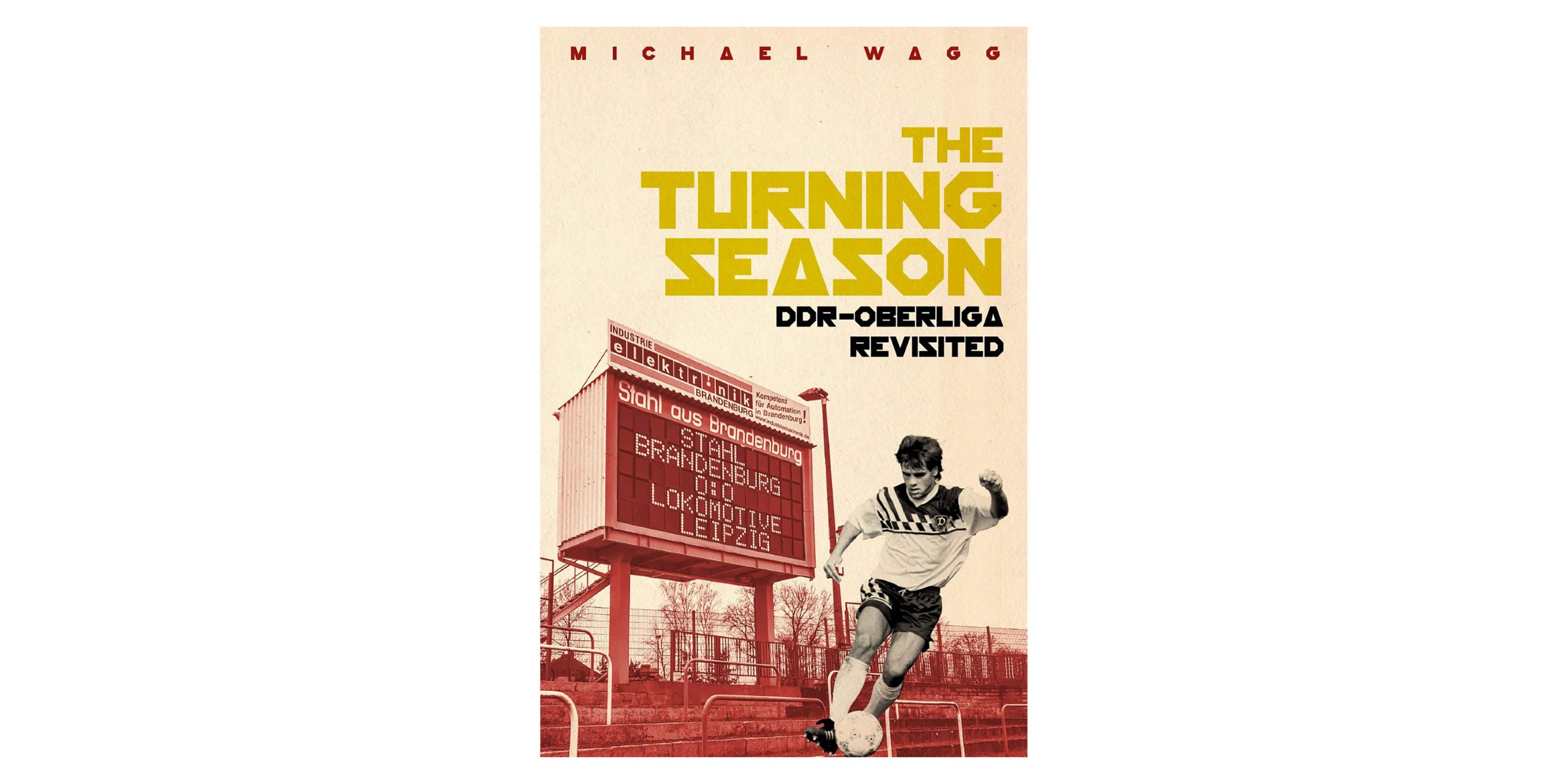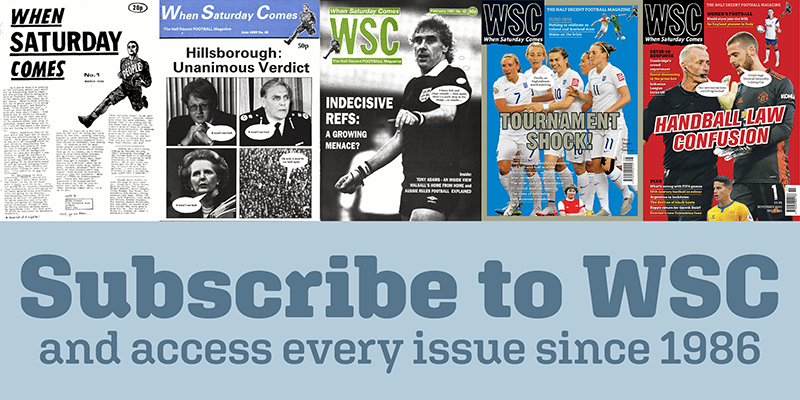
Pitch Publishing, £12.99
Reviewed by Huw Richards
From WSC 407, March 2021
Buy the book
Journalist Uwe Karte catches the leitmotif of Michael Wagg’s book, telling West German colleagues: “You in the west have the bigger success, but we in the East have the better stories. The GDR was a crazy country. It was other from the rest of the world. And football in East Germany was equally strange.”
The Turning Season is not quite a history of GDR football, a travelogue or an ethnographic study, but has elements of all three. It evokes not only what football was like in that largely unmourned nation, but what has happened since. Publishers who want books in neat pigeonholes would have rejected it. Pitch, to their credit, ran with it.
Wagg defines his project as “look around, watch a match and meet people” at each of the 14 clubs who played the penultimate season, 1989-90, of the GDR-Oberliga. Some of it echoes universal football fandom in the enthusiasm and idiosyncrasies of fans. But all has its context in the sheer otherness of the GDR, not least the tale of disenfranchised Hertha Berlin fans who would climb on to a railway bridge to hear matchday sounds from the stadium known as Plumpe, just beyond the Wall.
It is an affectionate account, rooted in early fascination with the “Dadaist delight” of club names such as Waggonbau Dessau and Aktivist Schwarze Pumpe, but far from starry-eyed. Visiting Eisenhüttenstadt, a GDR creation once called Stalinstadt, he reacts: “I like bleak Soviet concrete, but this is something else. I’ve rarely seen quite such a sad place.”
None of the 14 clubs played at as high a level in 2019-20. A more analytically minded writer might have asked a little more about why the former GDR clubs (he pointedly excludes RB Leipzig) who have enjoyed comparative success since 1990 – Cottbus, Rostock, Union Berlin and Aue – were previously marginal forces, while former powerhouses like Jena, Magdeburg, Leipzig and the Dynamos of Berlin and Dresden now scratch a living below the second tier. There is, though, insight into some GDR failings in his explanation of West German coach Uwe Reinders’ success at Rostock: “Specialist football thinking, rather than the more usual imitation of the training plans for athletes and swimmers.”
But Wagg’s concern is people and anecdote. He finds plenty of both, from the ingenuity of the scoreboard operator at Stahl Brandenburg to Karte’s biography of fated Dresden “rockstar” Jörg Stübner. Interest in an unusual house in Jena leads him to insights into the Bauhaus movement in that city, echoed in Halle where he finds that different decisions in the 1920s might have given the local football club a stadium designed by Walter Gropius, a misfortune nevertheless paling alongside a grim history of fatal accidents.
He enjoys more conventional football fare in meeting the Jena fan with a passion for Newport County and surviving members of Magdeburg’s Cup-Winners Cup-winning team. There are Berlin bars called Offside, which he nearly blows up with his vaper, and Panenka. The reader occasionally wonders where this somewhat meandering journey goes next, but never stops wanting to know. Huw Richards
This article first appeared in WSC 407, March 2021. Subscribers get free access to the complete WSC digital archive – you can find out more here
